visionOS 2 is a promising update with tons of new features
Less than five months after Apple Vision Pro launched, Apple has revealed visionOS 2. Here are many of the major changes coming to Apple's spatial computing headset.
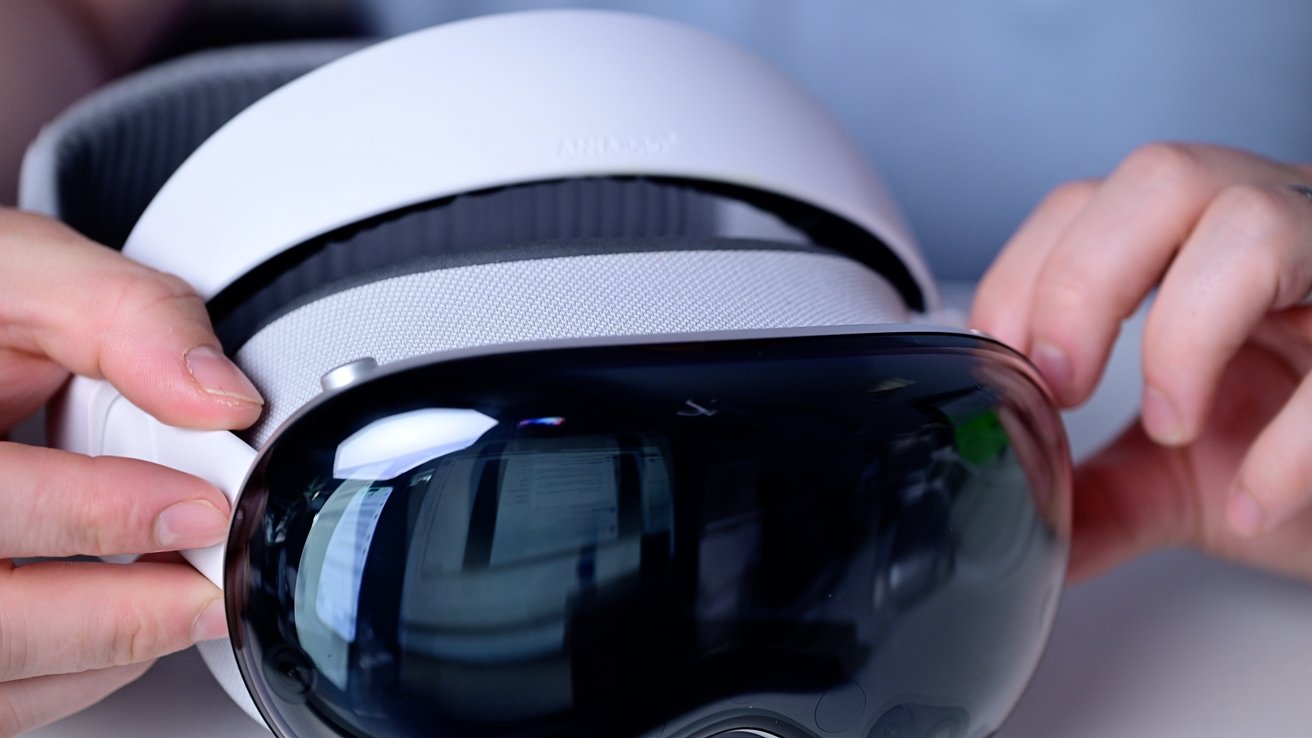
Vision Pro gets better with visionOS 2 this fall
Most of us here at AppleInsider are big fans of Apple Vision Pro. There are a few notable exceptions.
Regardless, despite the steep price of admission, visionOS is a fantastic operating system that paints a clear picture of Apple's vision for working in 3D space.
Not only is visionOS 2 a great update, but so far it's been less bug-prone as a beta versus visionOS 1.2.
Navigation in visionOS 2
After prolonged use and after our initial review, we started to notice how navigation could sometimes be a chore. Reaching your hand to the top to hit the Digital Crown was a pain.
It became easier to open the Control Center and use the Home Screen shortcut at the upper-most portion of the virtual screen. This still involved looking up or tilting your head.
Apple fixed all of this with a new hand gesture. You glance at your hand, and a little circle appears, hovering above it.
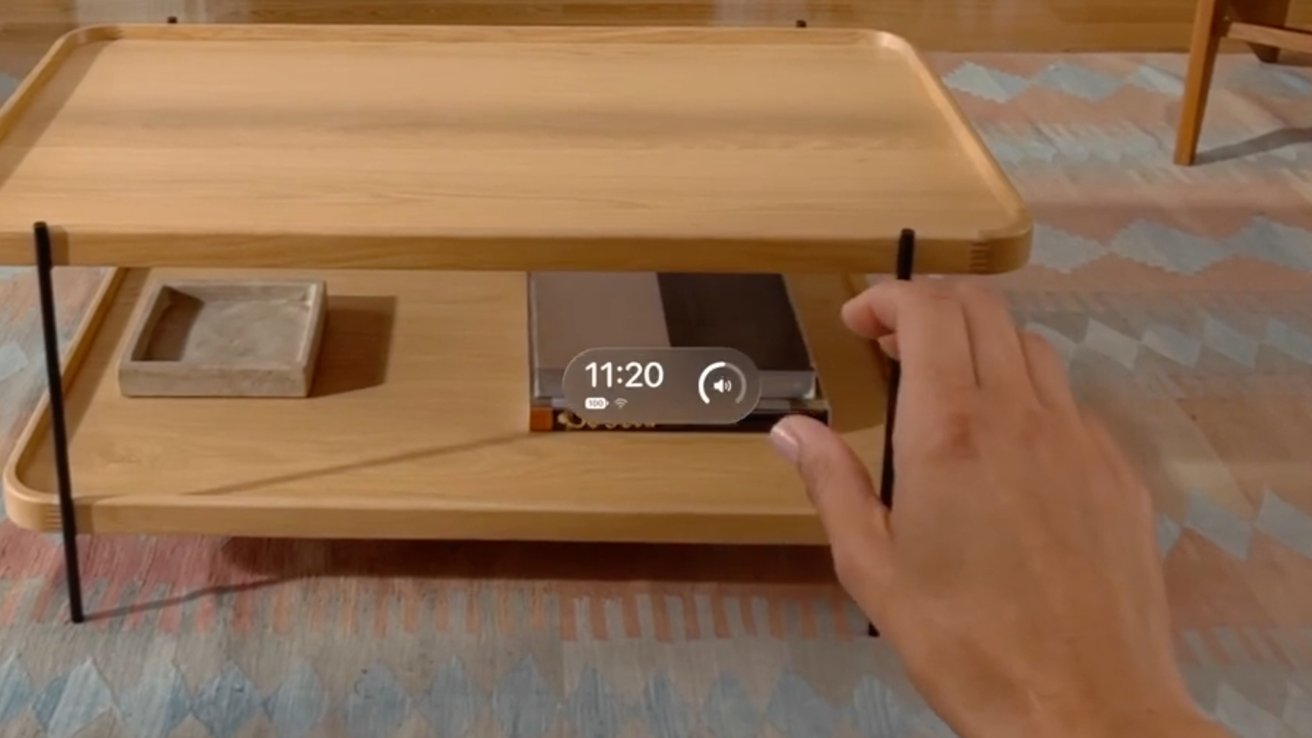
New gestures make navigation so much better
With a tap of your fingers, you're back to the Home Screen. If you look at your hand and turn it over, you'll see a mini Control Center.
It will show your battery life, Wi-Fi status, and volume. Finally, when you flip your hand over, you can pinch and drag left or right to adjust the volume.
It's all so fast, fluid, and natural. These are motion-tracked to your hand, so as your hand moves, these graphics go with it.
And, the Home Screen can be rearranged. If you tap and hold while looking at any of your icons, they'll jiggle.
You can pinch and drag them around anywhere you want, in any order. They are no longer forced to be alphabetical and includes the apps in the "compatible" folder.
Apple relegated all non-native apps into this folder with the shipping version of visionOS. They weren't able to be removed, to the ire of users.
Environments in visionOS 2
Apple Vision Pro launched with many real-world environments, but two were listed as "coming soon." They were Lake Vrangla and "beach."
The latter is Bora Bora, and it will arrive with visionOS 2. This may be my favorite-looking environment.
It's animated, so the waves are breaking against the shore, the palm trees sway, and you can hear the sounds of the lapping water.
Oddly, Lake Vrangla is still absent from visionOS 2. It could make it by this fall, but Apple is happily touting Bora Bora on its update page without mentioning the other.
Using environments is also improved. A keyboard will be visible through the environment, instead of being masked.
Keyboard edge detection is a little rough right now, but we expect that to be improved as time goes on.
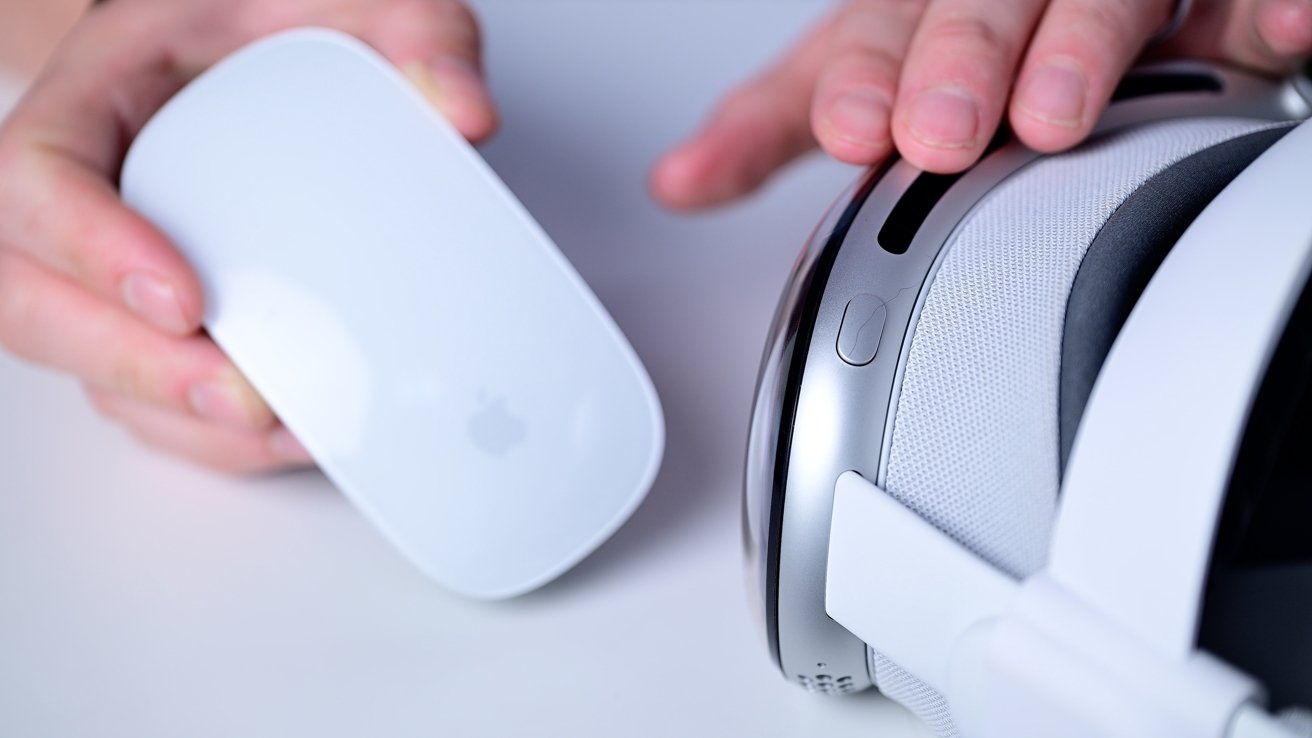
You can now pair a mouse with Vision Pro
On a related note, any Bluetooth mouse or trackpad can paired with Vision Pro. This includes Apple's Magic Mouse.
Mirroring your Mac with visionOS 2
My favorite feature of visionOS 2 won't be arriving this fall. It's one of a few features that have been punted to a smaller, point release later in the visionOS 2 release cycle.
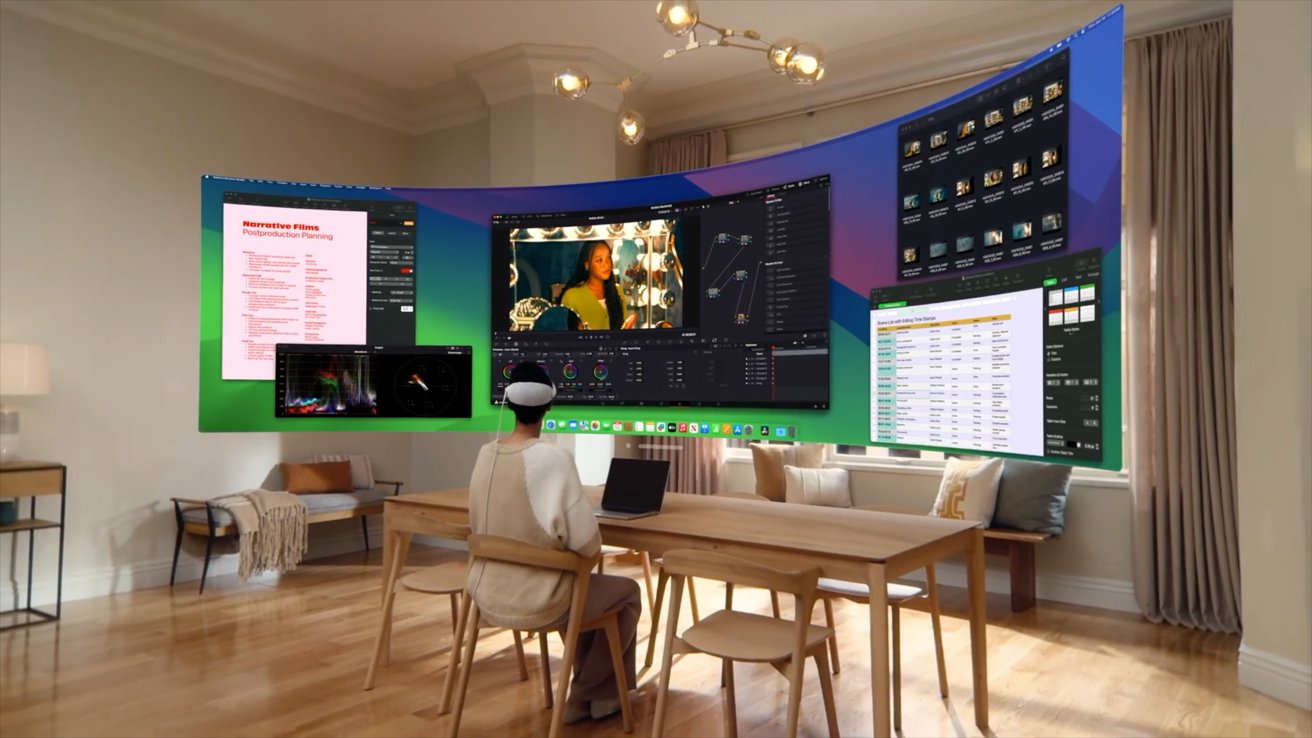
The ultra wide screen looks great for your Mac display
That feature is new display resolutions for mirroring your Mac. It is one of our favorite use cases for the headset.
Before, you were locked into a single, small display when you'd mirror your Mac. This major update has two new resolutions to choose from.
You can also opt for wide or ultra-wide. The latter is the equivalent of two 4K displays sitting side-by-side.
Apple makes it look natural by curving the display around you and applying foveated rendering to the edges.
Photos in visionOS 2
A theme this year for Apple's software updates is a redesigned Photos app, which extends to Vision Pro. The app doesn't look as different as the other platforms, but it still is improved.
It would have been great to see some of the new Apple Intelligence features for Photos here, but that's only available for M-series Macs and iPads, plus the iPhone 15 Pro or Pro Max.
When viewing photos, you can enable SharePlay. You and your friends or family can enjoy your memories together.

3D photos look awesome in visionOS 2
The best change, though, is turning 2D photos into spatial photos. This works with any photo -- ones from your iPhone, your dedicated camera, or that you download from the web.
Even our resident Apple Vision Pro cynic is impressed by this new feature. He's had a digital camera since 1999, with a 12-megapixel one since 2006, and he says it's making even some of those two-decade old pictures look great.
You pull up a pic and tap the spatial cube icon in the top-left corner. An animation washes over your image while it analyzes it from both left and right-eye perspectives.
We expect that this is going to be a big hit with users.
More changes in visionOS 2
This update has plenty of small changes alongside the ones we outlined above. Guest Mode, for example, remembers the hand and eye data for the last user. This nixes the need to redo calibration each time the guest takes it off, for a rolling 30 days.
Multi-view is coming, first to Major League Soccer and Major League Baseball apps. Users can watch up to five games simultaneously.
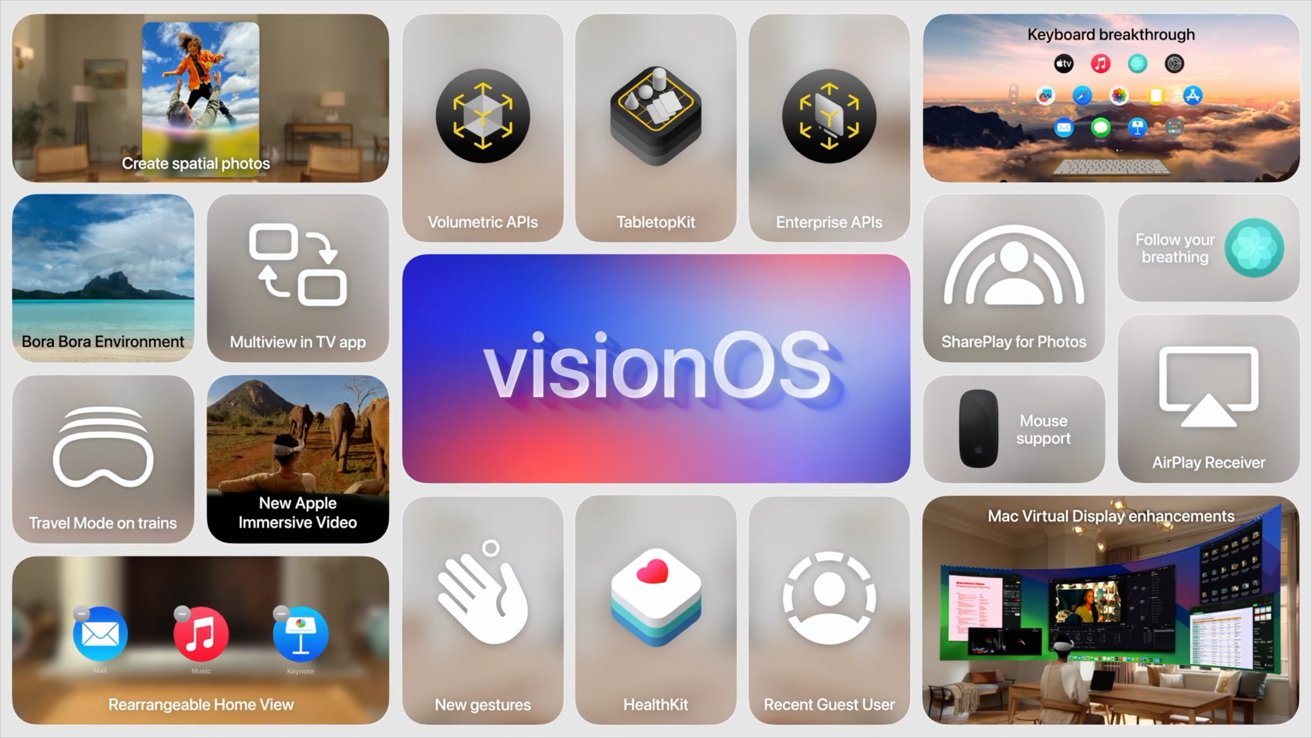
Apple packed a ton of new features in visionOS 2
Vision Pro can act as an AirPlay receiver. Anyone can cast audio or video directly to the headset, just like you could do with an Apple TV or Mac.
There is full support for webXR, enabling spatial experiences via the web. That compatibility makes it easier for developers to port immersive spaces, for users to watch existing 3D spatial videos, and more.
I'm pleasantly surprised at how much Apple was able to include in visionOS 2. While it won't justify the $4,000 headset for everyone, it will be great for existing owners and future models.
Availability of visionOS 2
Apple will ship visionOS 2 in the fall of 2024, likely alongside its other major software updates.
It comes just as Apple has started to expand the availability of the device. China, Hong Kong, Japan, Singapore, Australia, Canada, France, Germany, and the UK will all have the hardware in-hand by mid-July.
Read on AppleInsider


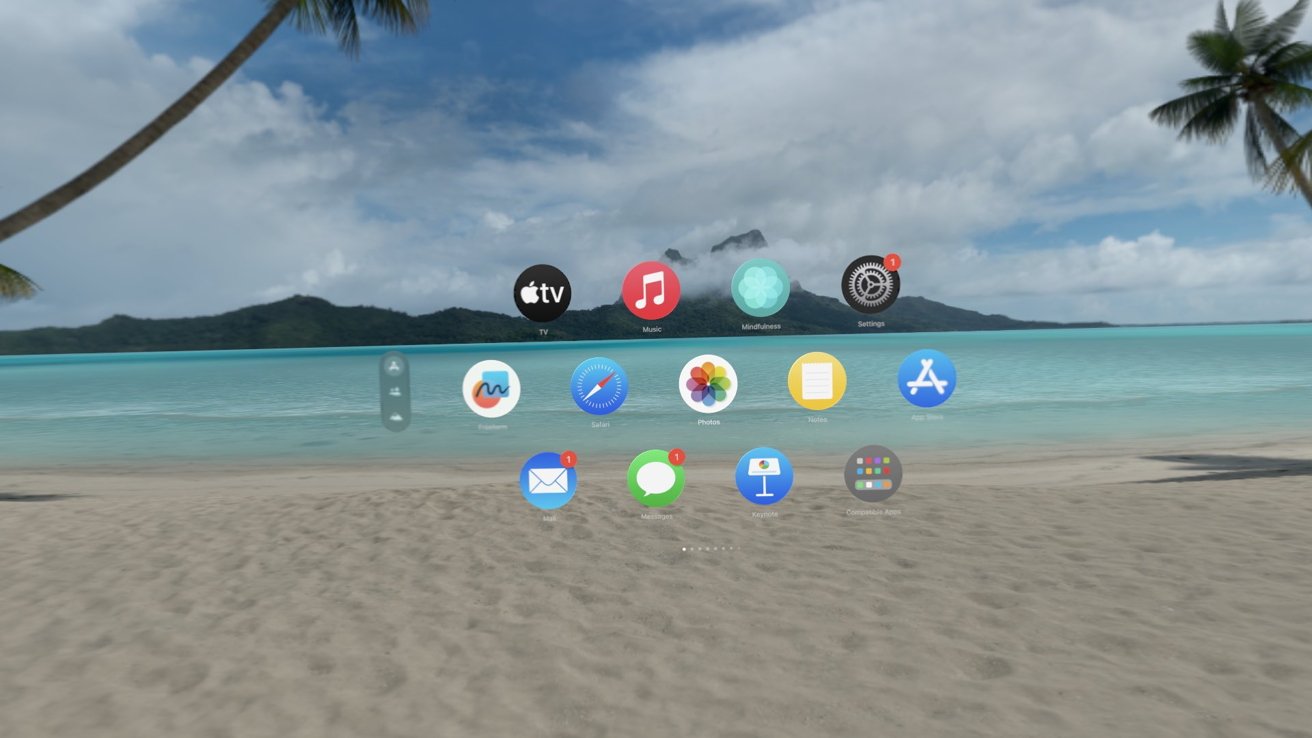
Comments
Not with the Vision Pro. It's like Henry Ford's mantra: you can have any colour you like as long as it's black.
I cannot begin to imagine Apple releasing just the one iPhone model: iPhone Pro Max specced to the hilt at $2200 USD. For starters not many people can afford to spend that much on a phone, neither do all users need that level of iPhone.
The Vision Pro looks to be a truly revolutionary product in the mixed reality headset space, but at $3500 USD per unit it is too rich for me.
The other problem is the buyer needs to go into the Apple store to be fitted for the product. Another impediment.
There is no trade-in for the Vision Pro! to bring the cost down.
I would suggest that somewhere along the line Apple botched this product from wow to go.
Tim Cook needed a headline grabbing product and pushed for its release before it was ready. Hopefully when Apple re-releases the Vision Basic in 2025/2026 it will have refined the product to the point of where the main features of the Vision Pro trickle down to the Vision Basic, plus the hardware costs will have been streamlined and on mass production cost less.
I am a buyer at $1500 USD. That's it.
Can I afford to wait to 2025/2026? Well, I haven't been lying back dreaming I must have a mixed reality headset that will drain my wallet out of $3500 USD.
The iPhone is a different paradigm. I often do think of the next release and what it can do for me. The iPhone 16 looks like a winner. And I will be upgrading. And after the trade-in it will run me appx. $900 USD. I can stomach that.
The good news is that Apple is not a one-trick pony like Humane who put all their eggs in one basket and now are shopping their omelette for a buyer.
Most likely HP. They usually buy obsolete technologies. Palm O/S - remember that?
Not sure I’d make a comparison for the VP and iPhone. But since you did, when the iPhone originally came out, you had to buy it outright without a subsidy. Prior to iPhone, people could “buy” a phone for about 1/2 the actual cost but committed to an annual or 2 year plan - generally 2 year. It was then the public found out how much their actual phones costs and the industry changed.
$3500 isn’t a high price for what you are getting with the VP if you take everything in to consideration. It’s a full computer where the world is your monitor. Rather magical, really. And if you look at other high quality Augmented Reality devices out there, you’ll gain a better understanding of where the technology is and what it takes to get it out there.
Costs will come down as development continues. Consider the first PC my family had was an Apple ][ with two 5-1/4” floppy drives, monitor, printer, etc. cost what I calculated to be over $10K in today’s dollars.
The Vision Pro is meant to be used in a solitary fashion, though it can interact with others if they need to interact with you.
The Vision Pro is another way of interfacing with a computer that offers some unique advantages, primarily being the best screen you have ever had access to in your life.
Not sure where you're going with this. These are in no way even remotely the same level of devices.
There’s a reason why we heard rumblings of apple management not being sold on this yet. It wasn’t ready to take over. Was prematurely sent to market.
If it was a visor for the Airpods Max or similar setup, they wouldn't need the lenticular lens and extra display because a visor can easily be pushed up if someone is talking.
This would also eliminate the pressure on the face. Linus tested the AVP and has red pressure marks all over his face:
https://www.youtube.com/watch?v=TuHOf_kZK6Q&t=412s
When the visor is pushed down into place, there can be a light seal cushion that is more like a soft fabric (Apple Cloth) that extends into place and wouldn't need custom fitting.
If they also work as headphones, they have more utility when not watching movies. If it uses the battery of the Airpods Max untethered and uses a USB-C battery when tethered, it will allow switching battery without shutting down.
The 256GB 11" dual-OLED M4 iPad Pro is $999.
The 256GB M2 Apple Vision Pro is $3499.
Somewhere in the middle, they can turn an 11" M4 iPad Pro into a wearable, even with $700 OLED display panels. Somewhere around $1500 would be more mainstream but $1999 should be achievable.
Right now it’s impossible because with every time I pick up a piece to put in my mouth, the AVP thinks I’m trying to do tap gestures, constantly scrubbing to a different spot in the video, closing the window, “clicking” on other videos, other annoying crap. Pisses me off! Why can’t I just “lock” tap commands until the video is over (or until I unlock)?
Other than that, I love it! It’s increasingly part of my workflow.
To be honest, I had never heard of that device. So I just googled it, and found this comment on the NY Times website:
On June 7, the company that makes the Humane AI pin warned customers about charging the device because it may start a fire. Here are there exact words:
Nor was AVP “premature”. Its capabilities outstrip every other similar device, by a long shot. Is it in its ideal form? Of course not, iterative development is the name of the game, for all things. Crawl, walk, run. “If you’re not embarrassed by your first version, you released too late.”
As for “the real thing” (glasses), that’s certainly going to be cool, but it will also be a different product. Purely AR with no VR. And also likely decades away. Waiting for that is as absurd as saying tube TV manufactures of decades past should have waited for flat panels! The original Macintosh has a puny B&W screen and very limited capabilities (despite costing twice as much as the AVP for the time), should they have waited until the iMac!? The original iPhone didn’t even have a video camera or even copy & paste, should they have waited? Lord no!
Some of you don’t really understand how product development works. Contemporary products don’t spring out of a clamshell fully formed. Iterative development is how we get there.
Gruber wrote about this almost 15 years ago:
https://www.macworld.com/article/205387/apple-rolls.html
Just because you can't afford it (or don't want to) doesn't make it too expensive. It's priced appropriately for what it is.
You don't have to though. You probably should to ensure getting the best fit possible, but you don't *need* to.
What are you talking about? You can trade in any of your Apple devices at any time for store credit.
The first iPhone didn't have MMS, copy and paste, or App Store, etc. Clearly they shouldn't have released it until it was the iPhone 4! 🙄
The iPhone 16 that nobody has seen yet outside of Apple? Sure, looks like a winner! You've clearly established the cost/value of the iPhone is worth it for you. It's not there for the AVP now or anytime in the foreseeable future. Maybe never.
What doesn't make sense is declaring a new product/platform as a failure because you don't want to pay for it. I didn't spend years ranting about OLED TVs being failures up until the time at which I felt like the price had come down enough to make it an attractive purchase for me. It's like the ridiculous questions in forums like "Is a MacBook Pro worth it?" which of course is meaningless without knowing what your use case is, the value you'd get out of such a device, your financial situation, so forth.
LOL. We both essentially said the same thing.